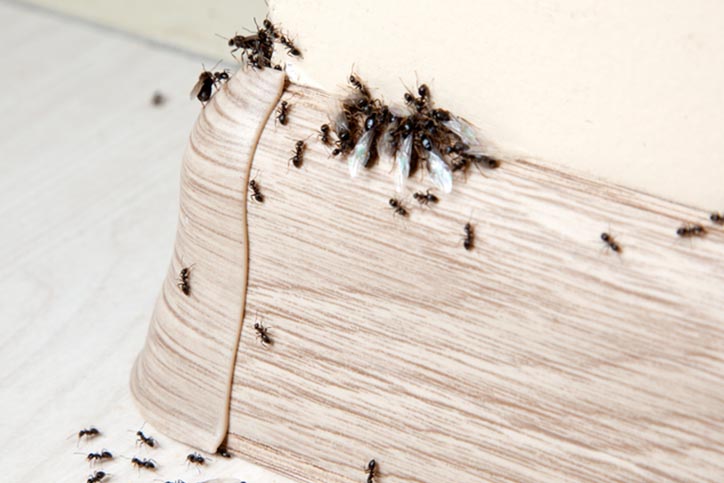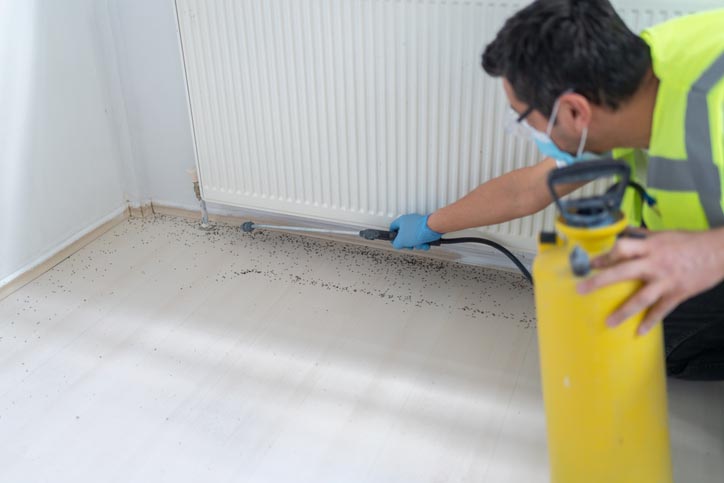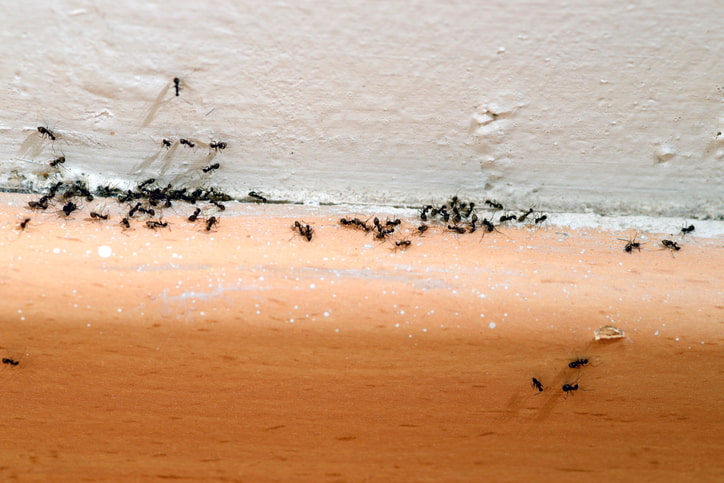Ant infestations can turn from a minor nuisance to a major disruption, if left unaddressed. With over 90 ant species across Alberta, understanding what attracts these insects, how to spot early signs of an infestation, and what options are available to eradicate them is essential for keeping your home or business pest-free. Here, we cover effective prevention methods, natural and chemical treatments, and expert tips to ensure a long-lasting solution.
Types of Ants Found in Alberta Homes
Different species of ants exhibit varying behaviours and nesting habits, so knowing the ant type can help select the right treatment method.
- Pavement Ants: Commonly nest in cracks and along sidewalks; attracted to sweets.
- Carpenter Ants: Prefer moist, decaying wood; can cause structural damage.
- Odorous House Ants: Give off a foul odour when crushed; tend to nest near water sources.
Each type may require slightly different handling strategies, which pest control professionals can identify and address accurately.
Why Ants Invade Homes: Understanding the Root Causes
Ants are drawn indoors primarily for food, water, and safe nesting spaces. Homes provide an array of attractants, from crumbs on the floor to structural gaps that serve as perfect nesting sites.
Key factors that attract ants indoors:
- Food Sources: Accessible crumbs, sticky spills, pet food, fruit, and unsealed containers.
- Moisture: Leaks in pipes, condensation, and humid basements attract ants.
- Shelter: Structural gaps in walls, floors, and foundations provide ideal nesting spots.
Tips for preventing ant entry:
- Keep Food Sealed: Store items in airtight containers and quickly clean up spills.
- Address Water Leaks: Repair leaky faucets and use dehumidifiers to reduce moisture.
- Seal Entry Points: Caulk cracks and gaps around doors, windows, and foundations.
Identifying the Signs of an Ant Infestation
Spotting an ant infestation early is essential for preventing it from spreading. Some signs are subtle, while others indicate an established colony inside your home.
Early signs of ant infestation:
- Ant Trails: Long lines of ants travelling to and from food sources signal a direct route to a nest.
- Visible Nests: Outside, small mounds near foundations, driveways, or sidewalks may indicate nearby colonies.
- Swarming Ants Indoors: Winged ants around windows or doors often signify a mature indoor colony.
Common areas to inspect:
- Kitchens and Pantries: Ants are commonly found around food sources and storage.
- Bathrooms: Moisture-heavy areas are prime locations for colonies.
- Basements and Garages: These areas offer both shelter and humidity.

Natural Methods to Combat Ant Infestations
Natural remedies provide a safe, chemical-free way to address mild to moderate infestations. While some options require frequent reapplication, they can effectively control ant populations without harming pets or children.
Diatomaceous Earth
Diatomaceous earth is a fine, naturally occurring powder derived from the fossilized remains of ancient algae called diatoms. It dehydrates insects on contact, disrupting their exoskeletons. Sprinkle it in cracks, along baseboards, or at entry points to discourage ants.
Essential Oils
Certain essential oils, such as peppermint, tea tree, and citrus, disrupt ants’ scent trails. Dilute a few drops in water and spray the solution around entry points, windows, and doors.
Vinegar and Water Mixture
A solution of equal parts vinegar and water effectively disrupts ant trails, erasing pheromones that lead other ants inside. Use this mix to wipe down countertops and other surfaces.
Baking Soda and Sugar
Combine baking soda with powdered sugar to lure ants. When ingested, the baking soda reacts with acid in the ants’ digestive system, proving fatal.
Citrus Peels
Citrus peels contain natural compounds that are toxic to ants. Soak lemon or orange peels in water, then spray the solution on entry points and areas where ants are commonly seen.
Chemical Solutions for Persistent Infestations
Chemical treatments offer a more potent solution if natural remedies aren’t enough. However, they should be used cautiously, especially around pets and children.
Barrier Sprays
Barrier sprays, available at hardware stores, create a chemical perimeter around your home. Sprayed along the foundation, this solution kills ants on contact and prevents future entries. Reapply periodically, especially after rainfall.
Ant Granules
Sprinkle ant granules around your home’s exterior to create a barrier. Ants carry these toxic granules back to their colony, effectively spreading the poison. Keep granules away from pets and children.
Bait Stations
Bait stations are a highly effective method for killing an entire colony. Worker ants transport the bait back to the nest, distributing it among other ants—position stations in high-traffic areas, near trails, and spaces inaccessible to pets or children.
Professional Intervention for Severe Infestations
If your efforts don’t seem to reduce the ant population, a professional exterminator can assess the situation, identify the type of ant, and determine the most effective course of action. Licensed pest control specialists have access to advanced treatments and tools that can eradicate an infestation safely and effectively.
What to expect during professional treatment:
- Inspection: A technician will inspect your property for signs of infestation, identify the type of ant, and locate entry points.
- Treatment Plan: A treatment plan tailored to your home’s needs will be developed based on the inspection.
- Follow-Up: Many companies offer follow-up visits to ensure the problem is fully resolved.

Long-Term Strategies to Prevent Ant Infestations
Even after eliminating ants, it’s essential to adopt preventative measures to keep them from returning.
Routine home maintenance tips:
- Regular Cleaning: Sweep floors, clean counters, and empty garbage bins to eliminate food particles and spills.
- Manage Outdoor Spaces: Keep shrubbery trimmed and avoid stacking woodpiles close to your home, as they can attract ants.
- Seal Structural Gaps: Regularly inspect and repair cracks in walls, windows, and foundations.
Season-Specific Tips for Ant Prevention
- Spring Preparation: Ants become most active in spring. Start by deep-cleaning your home, sealing entry points, and setting bait stations in areas where ants have been seen previously.
- Summer and Fall Maintenance: During peak activity seasons, maintain barrier sprays and check bait stations regularly. Secure food sources and trash containers.
- Winter Preparations: Ants tend to be less active in winter, but preparing for spring by repairing leaks and sealing cracks ensures a better defence.
Choosing the Right Pest Control Company
Selecting a reputable pest control company is essential if the infestation requires professional attention. Look for companies with positive reviews, eco-friendly treatment options, and clear service guarantees. Many companies in Alberta, like One Man & A Ladybug, specialize in ant infestation management, offering preventative measures and effective eradication strategies.
Final Thoughts on Ant Infestations
Managing an ant infestation involves persistence, a mix of preventative measures, and, in some cases, professional intervention. By staying vigilant, employing effective treatments, and addressing environmental factors, you can keep your home ant-free year-round. For Calgary residents, professional services provide expert support and targeted solutions to keep pests from becoming permanent residents.
Call us and order the service at a favourable price by calling (403) 262-1666.



